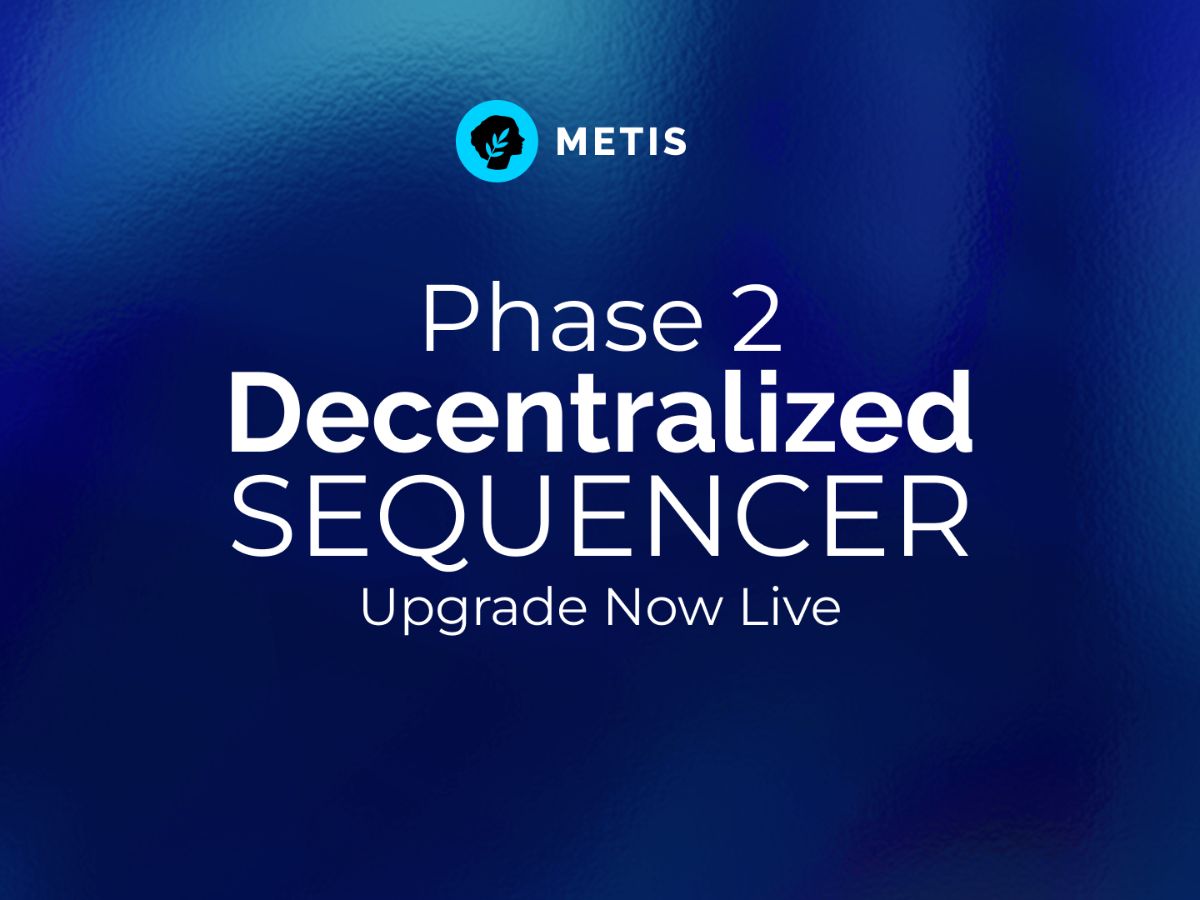Metis Phase 2: Decentralized Sorter Mining Opened and LST Ecosystem

Metis has entered Phase 2 of development, where the decentralized Sequencer can now engage in Sequencer Mining to earn METIS tokens as rewards. Regular users can also participate through the LST protocol, marking an important step in the development of Metis' network economy.
Table of Contents
Background: Innovation of Metis Decentralized Sequencer
Metis is an Ethereum-based Layer2 network built on the Optimistic Rollups framework. Unlike existing mainstream Layer2 competitors, Metis attracts market funds with its decentralized sequencer as a selling point. Therefore, both the virtual machine and consensus mechanism of Metis are modified with this goal in mind.
The ideal state is to use a PoS economic model to ensure the security of the decentralized sequencer network. However, in the first phase, Metis only allowed whitelist sequencers to join, and the mining mechanism has not yet been opened.
Updates in Metis Phase 2
Yesterday, the Metis team announced that the network will enter the second phase of development. After a hard fork in the network, three major new features will be introduced:
- Multiple transactions within the same block
- Transaction pool
- Sequencer mining
Multiple Transactions within the Same Block
Prior to the second phase, to ensure the normal operation of the decentralized sequencer, each block in the Metis network only had one transaction. After the hard fork, a block will be able to carry multiple transactions, thereby increasing the network throughput. Even during peak periods, transactions will have a fixed confirmation time of 2 seconds.
Transaction Pool
The transaction pool is a private transaction pool of sequencer nodes, similar to the memory pool in Ethereum, where transactions are added to the pool and await node packaging into blocks. This is also a key component of the 2-second fixed confirmation time in the Metis network.
Multiple transactions within the same block and the transaction pool will help reduce the cost of Metis block production. However, these are considered basic features of current public chains, and the real innovation in this phase lies in the third point.
Sequencer Mining
Sequencer mining can be said to be the most important concept introduced in the second phase, as it will allow the Metis network to properly adjust the incentive measures for all network participants. In the future, sequencer nodes can earn corresponding METIS tokens as rewards for processing transactions on Metis, generating blocks, and packaging them into the Ethereum mainnet.

In addition to attracting more professional nodes to join the Metis network, sequencer mining can also attract general users through LST services, allowing them to stake METIS tokens for mining to participate in protecting the network's security, similar to the relationship between Ethereum and Lido.

Currently, the Metis community has selected Artemis Finance and Enki Protocol as the two LST protocols for the Alpha phase. Users can now stake METIS tokens through their front-end interface to indirectly receive network mining rewards and obtain liquid staking tokens artMETIS or seMETIS.
In the first year, sequencer nodes will have a 20% mining reward rate. To maximize the attraction of METIS token holders, the team has initiated the Metis Liquid Staking Blitz LSB event to accelerate the growth of LST and LST-related projects on the Metis network.
Sequencer Mining Helps Increase Token Utility
Compared to other Rollups, Metis network uses the decentralized sequencer and staking mining mechanism to provide greater utility for its native token, which is indeed a good experimental field and a new technological narrative that helps break through the limitations of the four major Layer2 technologies.
However, sequencer mining is just the beginning. The real challenge for Metis lies in how to coordinate the interests of all parties in the ecosystem. Therefore, the distribution of token economics will be a top priority.
Currently, the team plans to attract nodes first through a fixed reward rate and involve general users through LST projects, which seems to be able to maintain the normal operation of the network for a period. However, whether the long-term network ecosystem can be healthy still depends on the progress of its ecological development.
Rollups Strategy Interpretation | Why don't mainstream Layer2 decentralize sequencers? Why is introducing Stack the solution to untie the knot?
Related
- Fireblocks and Paxos launch a million-dollar grant program to accelerate the adoption of PayPal's stablecoin PYUSD.
- Even AI stocks are surging! U.S. maintenance equipment supplier Grainger's stock price has grown by 262.68% over the past five years, reaching a historic high.
- JPMorgan Ventures into RWA Issuance! DTCC Cloud Sandbox Digital Launchpad: Driving Settlement Automation and Asset Tokenization